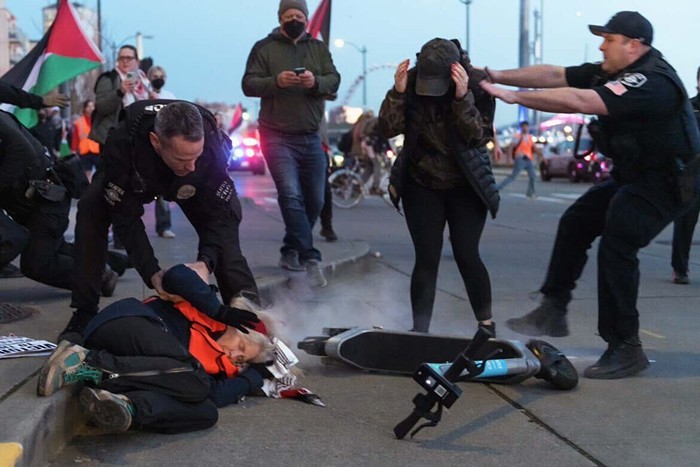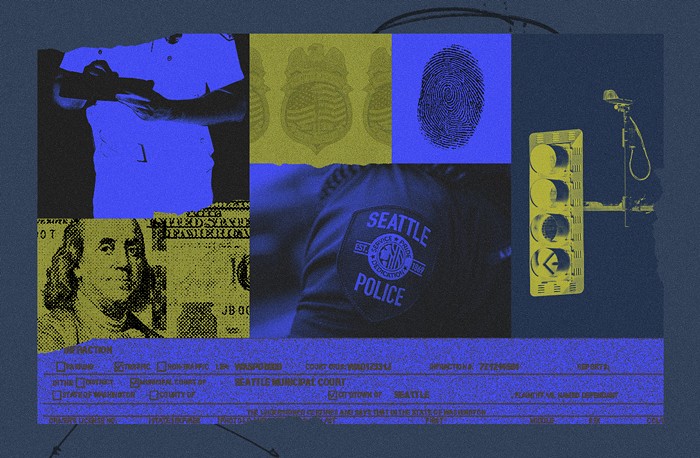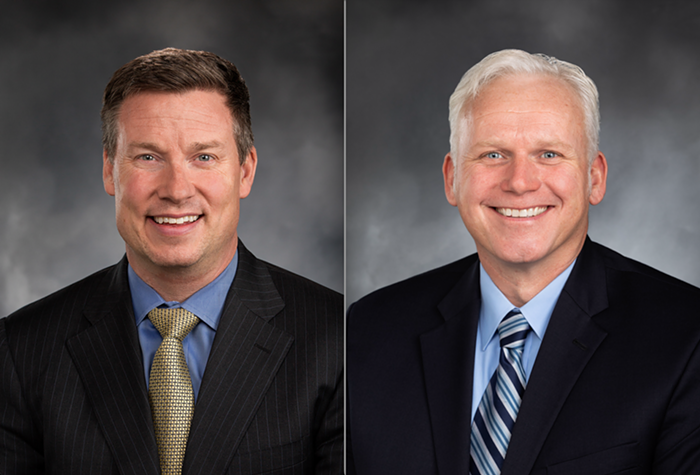Montlake businesses Mont's Market and Jay's Cleaners occupy a spot on 24th Avenue East that used to be a Gull gas station. There were steel tanks underground that stored toxic substances. What no one knew until it was too late was that these tanks were leaking.
"Since the 1990s, there have been several underground storage tank requirements that are aimed at detecting leaks and preventing leaks," Washington State Department of Ecology (DOE) public information officer Larry Altose told me. "When gas stations were started, there weren't such requirements. There wasn't any way to notice the tank was leaking until it was too late."
In 1989, right after voters in Washington passed a cleanup law called the Model Toxics Control Act, petroleum contamination was discovered at the Montlake Gull station. Somewhere between 4,000 and 6,000 gallons of gasoline had leaked into the soil and seeped into the groundwater.
After the cleanup process started, 900 cubic yards of contaminated soil were excavated. It wasn't until a new owner purchased the site in 1992 that the leaky tanks were removed. The DOE had supplied the new owner with a loan from the state, and a more thorough cleanup was done.
Yet during inspections in 2005 and 2017, according to the state, contamination remained: "gasoline, diesel, oil-range total petroleum hydrocarbons, benzene, toluene, ethylbenzene, and xylene."
Groundwater contamination can have detrimental effects on the environment. If toxic substances get too far into the groundwater, they can eventually link up with a body of water somewhere else. Gasoline spreading under buildings can also release vapors that affect people aboveground.
"The Montlake site is operated a bit different than a voluntary cleanup program because we run it in the manner of a formal site," Altose said. "Formal sites are generally sites that are very significant with contamination and require public comment."
The cleanup will cost the DOE an estimated $2.2 million. "It has just been a matter of allocating staff time and securing the funding," Altose said. "We expect to include this in our requests for funding from the legislature. Assuming we're able to secure funding, we would move forward next year."
The mixed funding agreement the DOE entered into on the Montlake site in the 1990s isn't par for the course these days. Typically, gas-station cleanups are done independently and only come to the DOE for approval.
Who conducts those cleanups? Developers.
"Essentially, the land in some places is worth so much that a gas station is not the highest and best use of the land," said Al Dams, chief deputy assessor for King County.
Among hot areas of redevelopment in Seattle right now are former gas-station lots in South Lake Union and Denny Triangle. Those sites may have undergone partial cleanups while they were still functioning gas stations, but new buyers demolish everything and conduct full cleanups themselves, in part because lenders and investors do not want to have liability problems.
"When there's an economic boom and there's a lot of real-estate development, it's actually good for the environment," Altose said. "It's kinda cool that it's going on."
We all know the city is changing right under our feet, largely at the hands of developers, but not all that change is bad. In the case of toxic sites like gas stations, developers are environmental stewards who bear the costs of cleanup themselves. And after these sites are cleaned up, new environmental standards are enforced. As Altose put it, "We might not see this type of cleanup in the future." Because we won't have to.




















